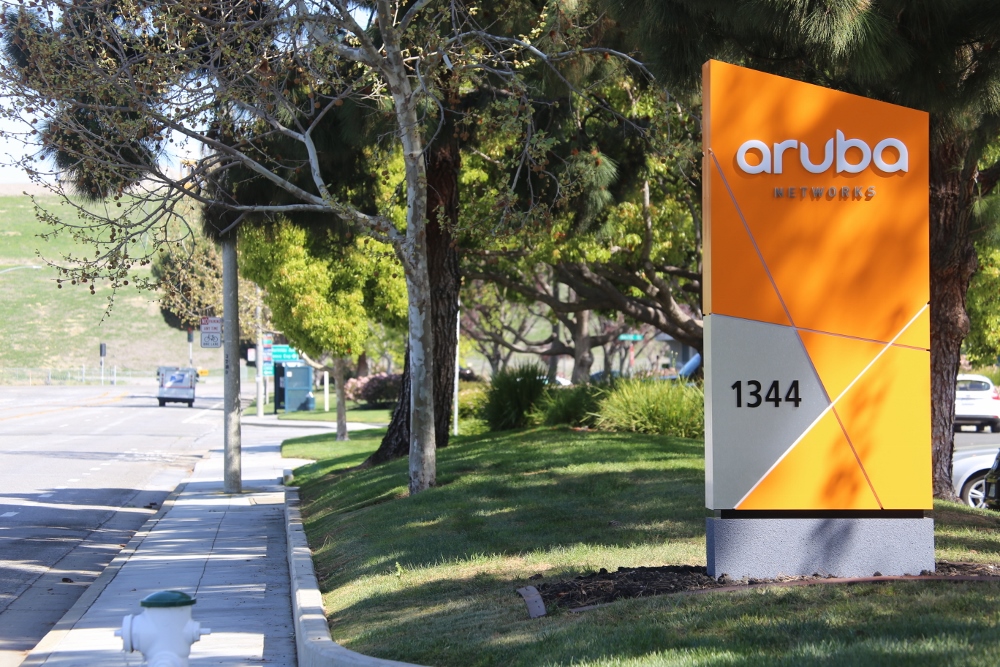

The combination of Aruba Networks and HP Networks will create a ‘giant startup’ with $3 billion (£2bn) in revenues, according to the former’s CEO Dominic Orr, who explained how the combined entity will sit within HP’s reorganisation.
HP is set to split into two entities on November 1 – one focused on devices such as PCs and printers, and another focused on enterprise. It is within the former that the networking division will sit, alongside server, storage, software and services.
HP’s acquisition of Aruba was motivated by a desire to bolster its wireless portfolio in a recognition that business was going cloud first and mobile first. In total, HP’s new networking arm believes it is chasing a $20 billion (£13bn) market opportunity comprising both enterprise and data centre.
“The company was formed about 90 days after Intel announced the Centrino chipsets and would put Wi-Fi on every laptop. The engineers at Aruba said if this is the case, there is a strong opportunity to create wireless and secure mobile access to enterprise.
“In 2015, combining Aruba and HP we are creating a new startup. Very few people are able to start a new company with revenues of $3 billion. We feel like a big baby with lots of muscles!”
Orr says the vision he delivered to Meg Whitman was one which chased this perceived market opportunity but also allowed it to be as small as possible – allowing its engineers to remain close to the customer and be more agile so it can respond to trends. While its traditional expertise has been in the wireless area, Aruba says it is just getting started with data centre networks for example.
“It turns out we can grow to be very big,” he boasted. “We want to lead in mobile first campus network. We want to be the leader in building networking for data centres attached to the cloud. There are unique attributes for data centre networking that is delivered in the cloud and we have a lot of assets in that area.”
Of course, Aruba is competing in a market that contains Cisco and Avaya among others. Why does Aruba, now under the HP banner, think it can win?
According to research by Infonetics, HP and Aruba are second in the wireless LAN market but are behind Cisco which, according to analysts “has rock solid fundamentals and positive feedback from enterprise buyers that will assure its dominant position in the years to come.”
However the same researchers claim security and cloud are driving spend on enterprise networks, with WLAN the biggest area of investment. And, HP is named as the third most cited vendor of networking equipment behind IBM and Cisco.
Like so many companies, Aruba places great importance on Gartner’s ‘Magic Quadrants’ and Orr was keen to point out how his firm compared to the competition.
“Everyone has products, that’s not important,” said Orr. “What matters is combining these products.”
The firm’s vision of the future network can be described in one sentence, according to Orr: “Agile application delivery from the data centre to the mobile edge.” He did build on that buzzword-filled statement by explaining the key areas Aruba would focus on to make networks smarter and more effective.
Traffic prioritisation is one area. Orr fears the unlicensed spectrum that most wireless access points depend on will eventually be exhausted. One solution, he said, was to make cells smaller and dividing the spectrum, but this would not solve everything.
A more effective solution is to rank traffic so the most important applications are handled first. If a receptionist is making a phone call and the CEO is watching iPlayer, the network will not discriminate, according to Orr.
“I need to the intelligence to decide what traffic can go through and what can wait,” he said. “The best network design will preferentially disappoint. You might be a normal employee but if you’re making a phone call that is very latency sensitive, I need to give you priority.”
Orr also said the new, cloud first workplace meant traditional network architectures that defined ‘trusted’ and ‘untrusted’ zones according to location and hardware were becoming outdated now that employees used multiple devices and businesses granted access to outsiders or guests.
“At Aruba we have a product called ‘Clear Pass’ which is a dynamic repository of all the users and devices in an enterprise and constantly looks at who you are and your persona.
“If you are a safe employee using a laptop with a lot of antivirus software you are very safe. If you are a safe employee using your child’s iPad, you might be able to receive something but not get all permissions.”
Aruba has designed networks for banks which limited certain activities on trading floors, which were bound to certain regulations and could only conduct some actions within trading hours. Elsewhere in the building, some of these forbidden activities were permitted.
Similarly, Aruba’s technology in theory should make it easier for businesses’ whose networks are mainly used for customers rather than employees, like hotels, airports and stadiums. Free Wi-Fi is already used by retailers to see where people shop, how often and for how long they visit and in some cases to track them round the store. Some even push customised offers and vouchers.
“You start to understand your business more,” said Orr. “If you apply analytics to this, you can add insight to your business.”
Do you know all about HP, the IT firm from the garage? Take our quiz!
Deliveries of Telsa's 'bulletproof' Cybertruck are reportedly on hold, amid user complaints side trims are…
New feature reportedly being developed by Apple for iOS 19, that will allow AirPods to…
Binance BNB token rises after WSJ report the Trump family is in talks to secure…
After failed Amazon deal, iRobot warns there is “substantial doubt about the Company's ability to…
Community Notes testing across Facebook, Instagram and Threads to begin next week in US, using…